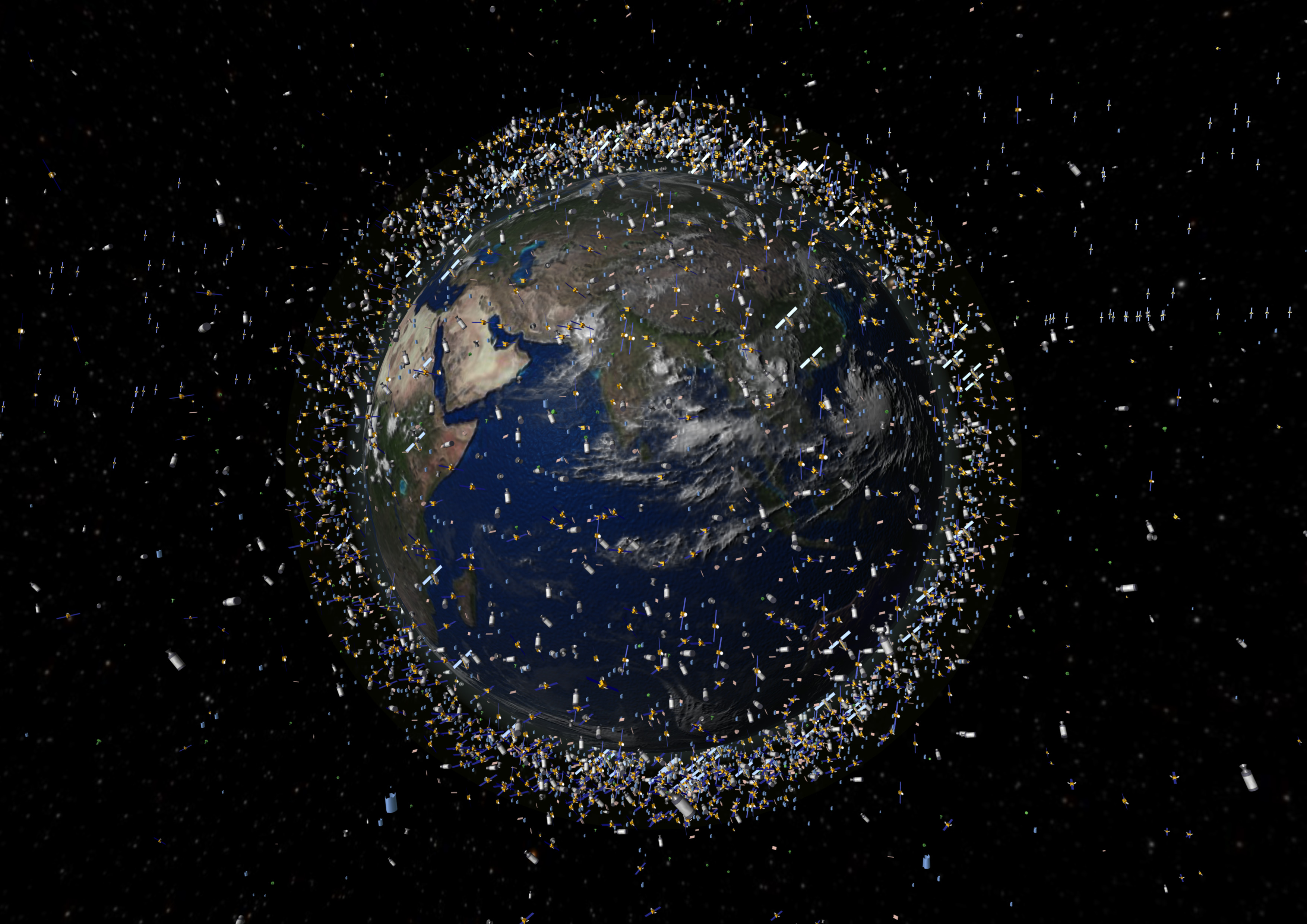[/caption]
Russia is looking to build a $2 billion orbital "pod" that would sweep up satellite debris from space around the Earth. According to a post on the Russian Federal Space Agency, Roscosmos' Facebook site, (which seems to confirm an earlier article by the Interfax news agency) the cleaning satellite would work on nuclear power and be operational for about 15 years. The Russian rocket company, Energia proposes that they would complete the cleaning satellite assembly by 2020 and test the device no later than in 2023.
"The corporation promises to clean up the space in 10 years by collecting about 600 defunct satellites on the same geosynchronous orbit and sinking them into the oceans subsequently," Victor Sinyavsky from the company was quoted as saying.
Sinyavsky said Energia was also in the process of designing a space interceptor that would to destroy dangerous space objects heading towards the Earth.
No word on exactly how the space debris cleaner would work, of how it would push dead satellites and other debris into a decaying orbit so that objects would burn up in the atmosphere, or if it might somehow gather up or "vacuum" debris. But at least someone is thinking about space debris and asteroid deflection and putting more than just a few rubles (60 billion of 'em) towards these concepts.
Sources:
Xinhuanet
 Universe Today
Universe Today
